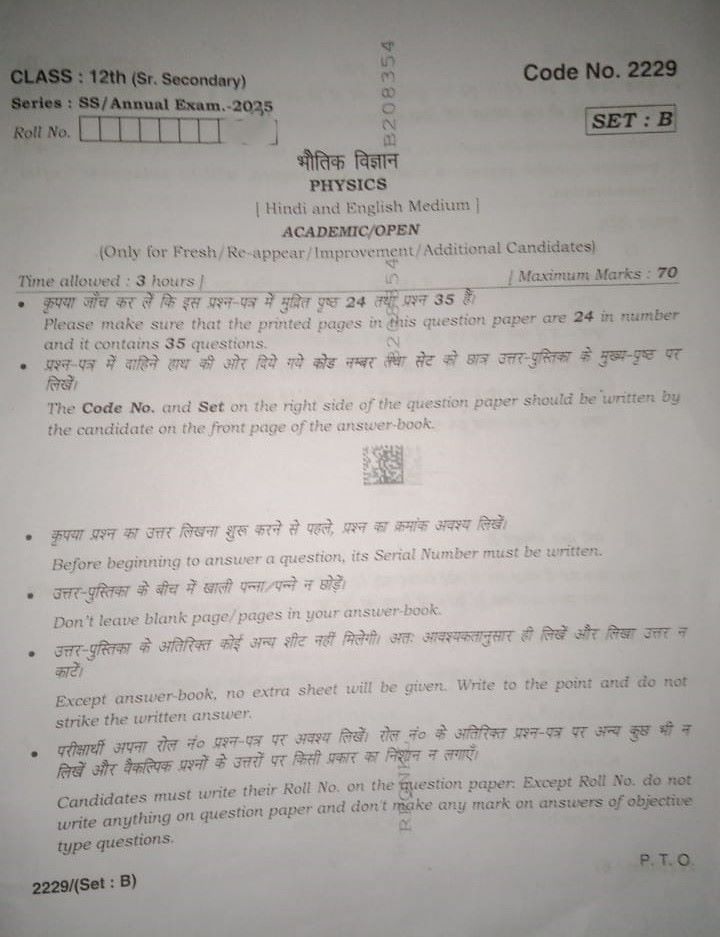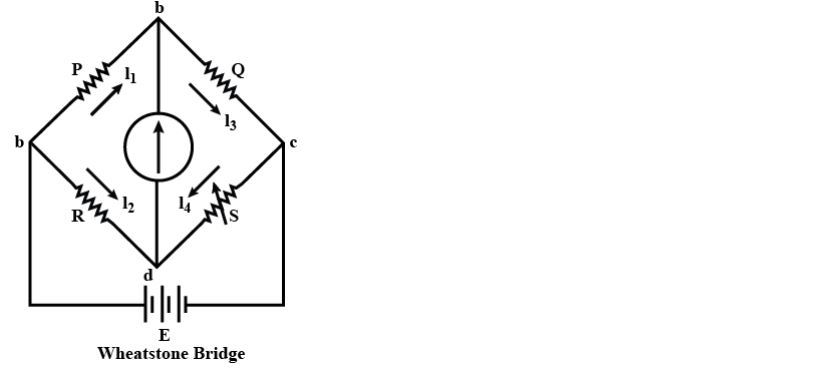Haryana Board Class 12th Physics Question Paper 2025: Are you also looking for the question paper of Haryana Board Class 10th Maths? Well, don’t worry as we have got you covered. Check this article to get the Haryana Board class 10th Maths question paper with answer key for free. Also, download the pdf for free.
HBSE Class 12th Physics Exam 2025: Highlights
In this table, we are providing the key highlights of Haryana Board Class 12th Physics exam.
| Exam Name | HBSE Class 12th Board Exam |
| Exam Conducting Body | Haryana Board of School Education (HBSE) |
| Exam Name | Physics |
| 10th Class Exam Start Date | March 4, 2025 |
| Exam Mode | Offline |
| Official Website |
Haryana Board HBSE Class 12th Physics Question Paper 2025
Below is the provided set for HBSE Class 12th Physics Question Paper 2025.

Haryana Board HBSE Class 12th Physics Question Paper 2025 |
HBSE Class 12th Physics Answer Key 2025
Below are the answers for Haryana Board Class 12th Physics Question Paper:
SECTION A
Question: 1
1. Which of the following has the longest de-Broglie wavelength, if they are moving with the same velocity?
(A) Proton
(B) Neutron
(C) Alpha (α alpha) particle
(D) Beta (β beta) particle
Answer: (D) β-particle
2.Which of the following particles has mass equal to that of an electron?
(A) Neutron
(B) Proton
(C) Positron
(D) Neutrino
Answer: (C) Positron
3.Which type of semiconductor is made by mixing Indium with Germanium?
(A) n-type
(B) p-type
(C) Both (A) and (B)
(D) None of these
Answer: (B) p-type
4.What orientation of an electric dipole in a uniform electric field is said to be in stable equilibrium?
(A) θ=0
(B) θ=90
(C) θ=120
(D) θ=180
Answer: (A) θ=0
5.When the length of a copper wire is doubled, keeping its area of cross-section the same, its resistance is:
(A) Doubled
(B) Half
(C) No change
(D) Four times
Answer: (A) Doubled
6.A charged particle enters a magnetic field perpendicular to the magnetic lines of force. The path of the charged particle is:
(A) Circular
(B) Ellipse
(C) Straight Line
(D) Helical
Answer: (A) Circular
7.Which quantity is increased in a step-up transformer?
(A) Current
(B) Voltage
(C) Power
(D) Frequency
Answer: (B) Voltage
8.In glass, the velocity of light is minimum for:
(A) Red
(B) Violet
(C) Yellow
(D) Green
Answer: (B) Violet
9.In Young’s double-slit experiment, the fringe width is found to be β. If the entire apparatus is immersed in a liquid of refractive index n, the new fringe width will be:
(A) β
(B) nβ
(C) β/n
(D) n2β
Answer: (C) β/n
10.What is the resistivity of a pure semiconductor at absolute zero?
Answer: At absolute zero, the resistivity of a pure semiconductor is considered to be infinite.
As the electrical conductivity of a semiconductor at 0K is zero. hence resistivity (= 1/electrical conductivity) is infinity.
11.What is the balanced condition of Wheatstone bridge?
Answer: When the Wheatstone bridge is balanced, then the ratio of the resistances of ratio arms are equal.
i.e., P/Q = R/S
12.Write the SI unit of magnetic flux density.
Answer:
The SI unit of magnetic flux density is Tesla (T).
Alternatively, Weber per square meter (Wb/m²) is also used.
13.A depletion layer consists of ______.
Answer:
A depletion layer consists of immobile ions (or fixed charges) in a p-n junction.
14.Electron volt (eV) is the unit of ______.
Answer:
Electron volt (eV) is the unit of energy.
15.All atoms except ______ contain neutrons in their nuclei.
Answer:
All atoms except hydrogen (protium) contain neutrons in their nuclei.
Protium (¹H) has only one proton and no neutron in its nucleus.
16.Assertion (A): The thickness of the depletion layer is fixed in all semiconductor devices.
Reason (R): Free carriers are available in the depletion layer.
Answer: Correct Option:(C) Assertion (A) is true, but Reason (R) is false.
Explanation: Assertion (A) is true: The thickness of the depletion layer depends on factors like doping concentration and applied voltage, but it is not the same for all semiconductor devices. However, it is a defined characteristic for a given device.
Reason (R) is false: The depletion layer does not contain free charge carriers. Instead, it consists of immobile ions (fixed charges) due to the diffusion of electrons and holes.
17.Assertion (A): The photoelectric effect demonstrates the particle nature of light.
Reason (R): Photoelectric current is proportional to the intensity of incident radiation for frequencies more than the threshold frequency.
Answer: Correct Option: (B) Both Assertion (A) and Reason (R) are true, but the Reason (R) is not the correct explanation of Assertion (A).
Explanation:
Assertion (A) is true: The photoelectric effect, explained by Einstein, shows that light behaves as discrete energy packets (photons), proving its particle nature.
Reason (R) is also true: When the frequency of incident light is above the threshold frequency, increasing the intensity increases the number of emitted electrons, leading to a proportional increase in photoelectric current.
However, Reason (R) does not explain Assertion (A)
18.Assertion (A): Lyman series lies in the ultraviolet region of the electromagnetic spectrum.
Reason (R): Lyman means ultraviolet; hence the series is in the ultraviolet region.
Answer: Correct Option: (C) Assertion (A) is true, but Reason (R) is false
Explanation:
Assertion (A) is true: The Lyman series corresponds to electronic transitions in a hydrogen atom where electrons fall to the n = 1 energy level. The emitted photons have wavelengths in the ultraviolet (UV) region.
Reason (R) is false: The term "Lyman" does not mean ultraviolet. The series is in the UV region due to the energy differences between the involved electron levels, not because of the name "Lyman."
Other Related Links

Comments
All Comments (0)
Join the conversation